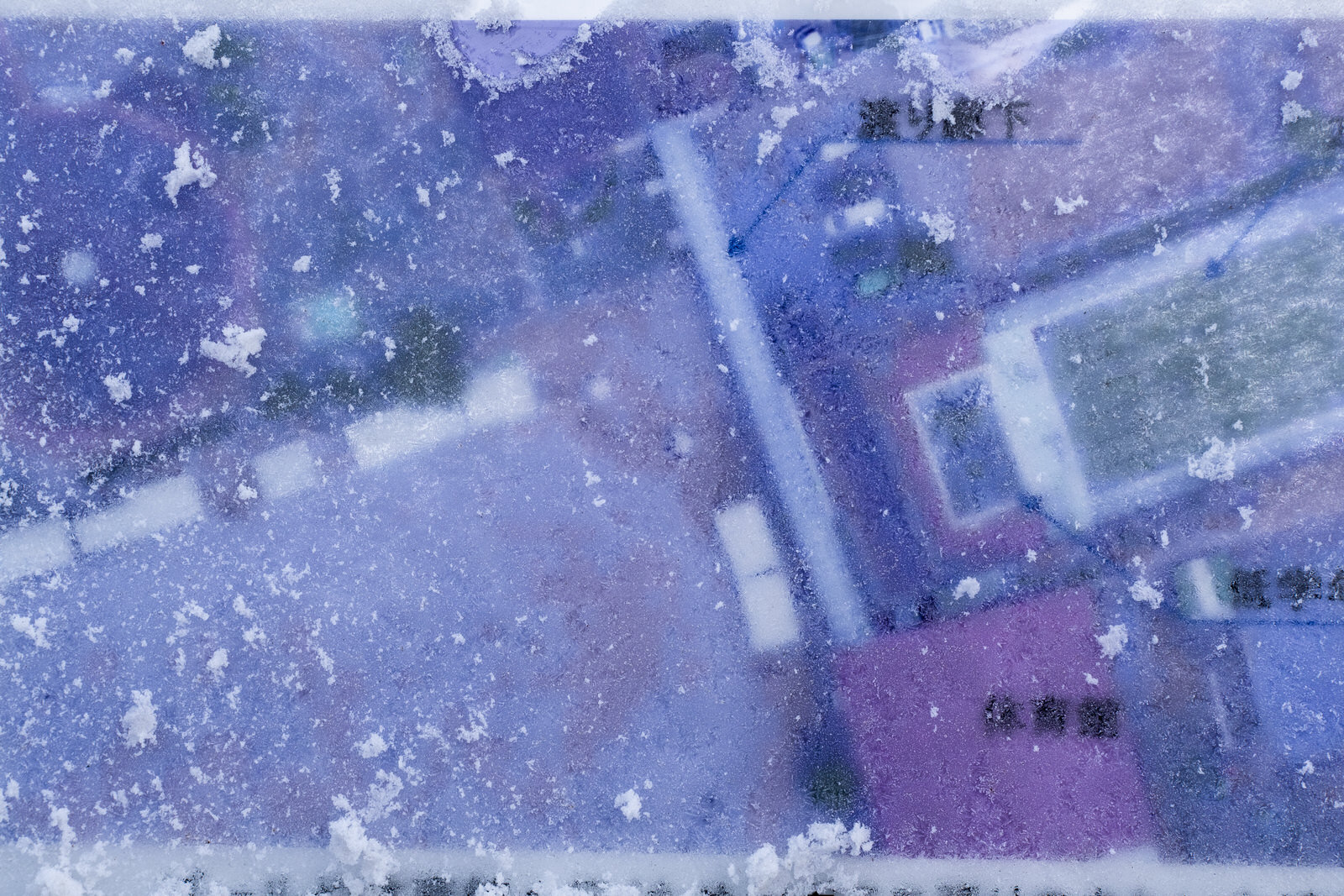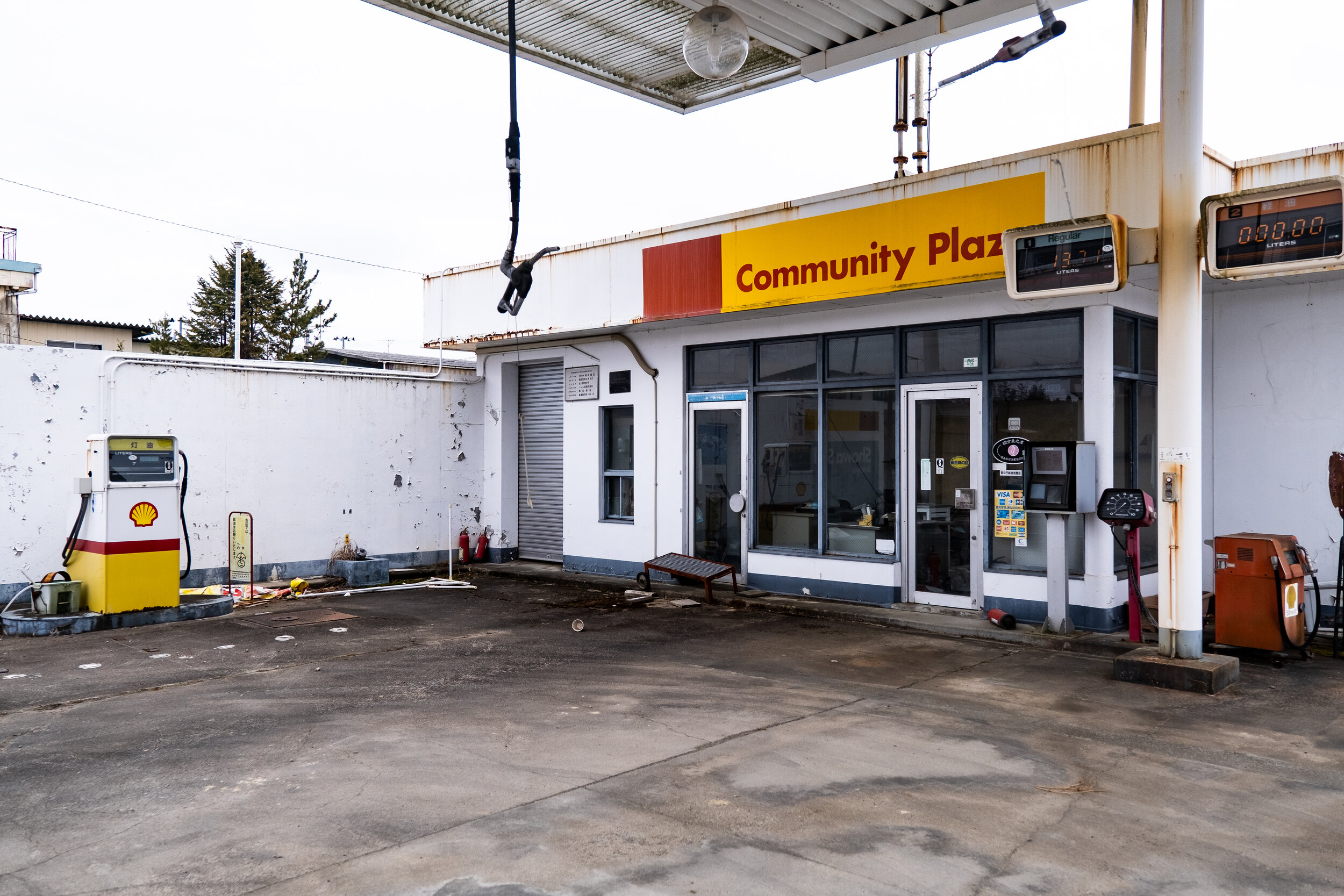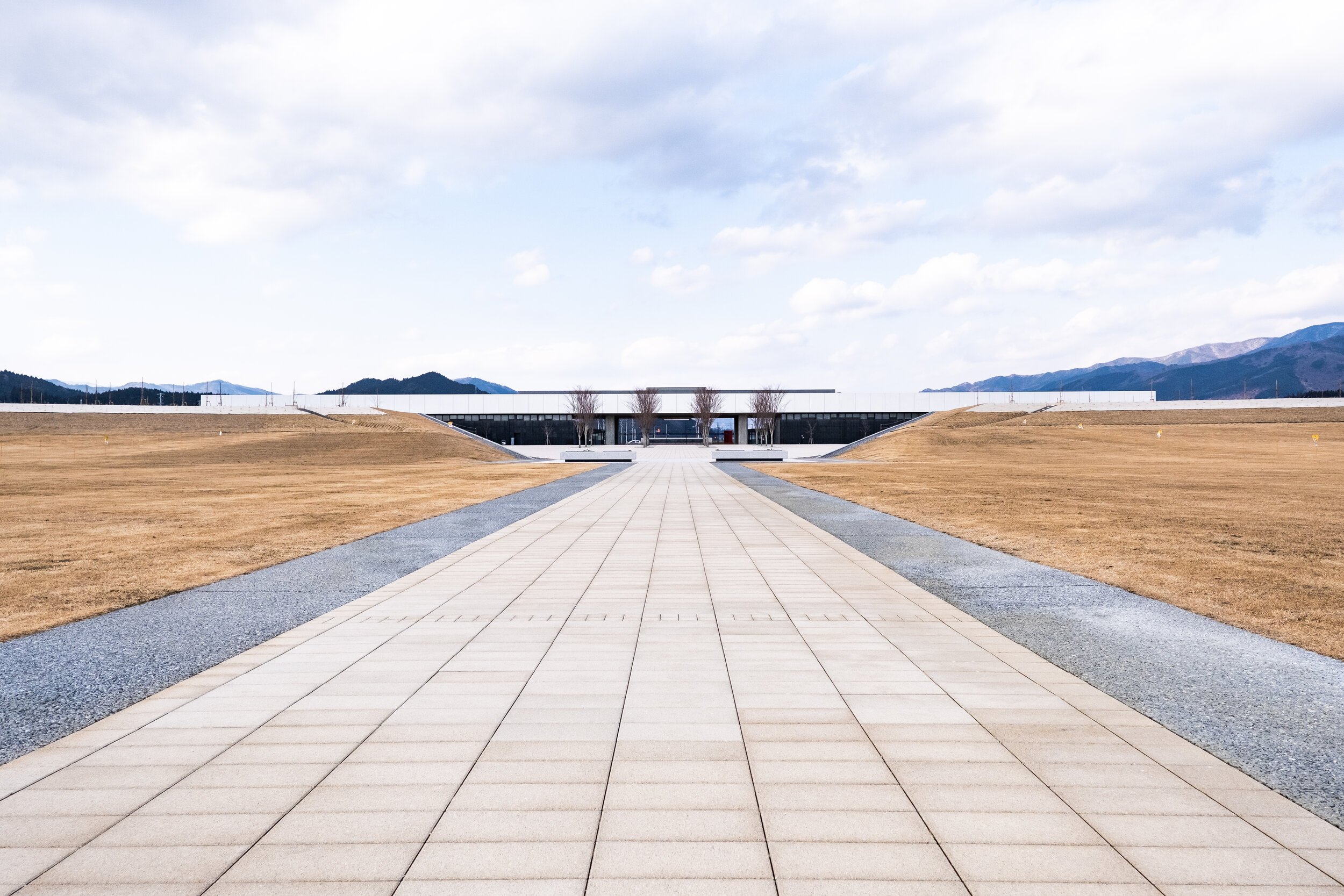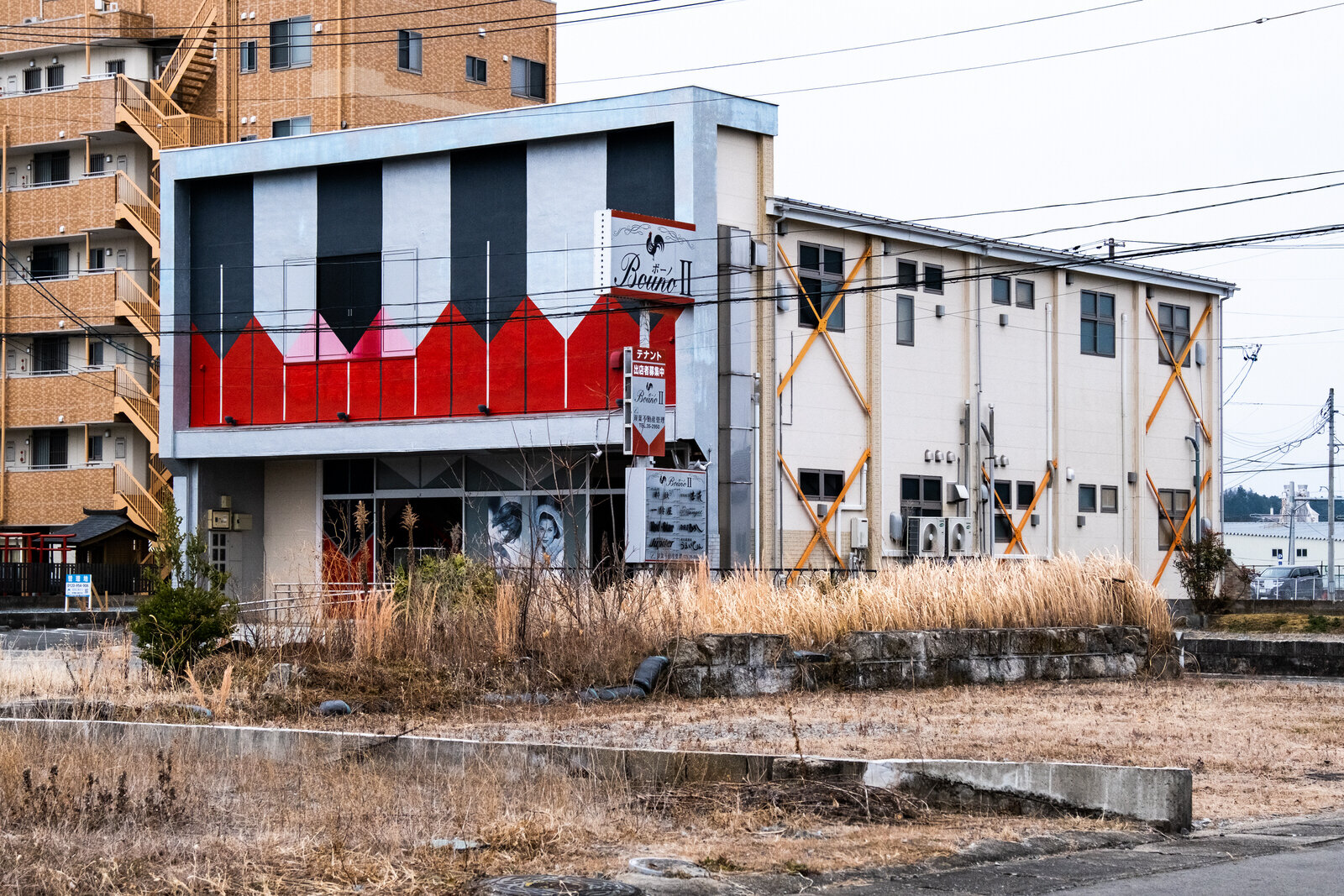The end of a forested path led me to an overlook. Perched above the jagged rock formations and rugged coastline, I looked out at the sea. The water lapped gently. A mid-sized vessel returned to Ryouri bay from a day of fishing. In the distance, I could see the town of Ofunato. The combination of the breeze and the gnarled trees jutting out from the cliffs gave me a sense of calm. I could feel an idyllic Japan that I love so dearly.
But a decade ago, those who call this region home experienced the antithesis of tranquility and continue to suffer from the events of March 11, 2011.
The Earthquake
A Friday.
2:46 p.m.
A magnitude 9.1 megathrust earthquake violently jolted the seafloor 70 kilometers east of Tohoku’s Oshika Peninsula. Referred to as the Great East Japan Earthquake, it was the most powerful earthquake ever recorded in the island nation - the fourth most powerful worldwide. The ferocity of the quake moved Honshu (Japan’s main island) 2.4 m (8 ft) east, shifted the earth on its axis (between 10 cm and 25 cm), and increased our planet’s rotational speed by 1.8 µs per day.
The great quake and subsequent aftershocks terrorized Japan. While the epicenter was 373 km (231 miles) northeast of Tokyo, the nation’s capital experienced shocks powerful enough to rip open the ground. The event so monstrous, tremors were felt as far away as Kaohsiung, Taiwan, and Beijing, China.
The physical and emotional impact of the earthquake was substantial. Yet, within hours, Japan found that the earthquake itself would only be the catalyst for a string of unimaginable, catastrophic events.
The exterior of Okawa Elementary School (Ishinomaki, Japan).
The Tsunami & Okawa Elementary School
As feared, the quake triggered an unparalleled tsunami that raced west towards Japan at up to 700 km/h (435 mph). At their peak, the tidal waves towered 40.5 m (133 ft) and had enough stamina to barrel 9.6 km (6 miles) inland.
One story that encapsulates the horror of Japan’s 2011 tsunami is that of Okawa Elementary, a primary school in Ishinomaki. While the tidal waves hammered Ishinomaki’s coast, another natural phenomenon happened in the city’s northeast. There the danger was the Kitakami River, an estuary where tidal waves managed to push up-river.
Three minutes after the earthquake, students and teachers evacuated Okawa’s classrooms and began to gather in the schoolyard. While exiting the buildings, some teachers told their pupils to immediately move to high ground. Several children started to make their way up the hillside directly behind the school - a steep embankment where Okawa students planted Japanese ash trees, cultivated shiitake mushrooms, and explored the forest. Yet, the decision was made to have those children return to the schoolyard and gather with the rest of their classmates.
Six minutes later a major tsunami warning was issued urgently requesting all to move higher, away from the banks of any river. Still, students and teachers remained in Okawa’s yard. A second warning was announced by a municipal vehicle passing by. 39 minutes after leaving their classrooms, the children remained in place, seemingly frozen.
Prior to the quake, the Miyagi prefectural authorities repeatedly directed schools to review their disaster procedures. Okawa Elementary School had created a tsunami plan but failed to include the most crucial components - a specified evacuation destination. Without a concrete directive, the 11 teachers continued to discuss a plan of action.
Several of the 77 children pleaded to move further uphill. Meanwhile, the tsunami surged through the Kitakami, enveloping houses, cars, and tens of thousands of trees. Debris was caught on major bridges (a fourth of which would eventually collapse) and the tsunami’s path was temporarily blocked. But the debris only served as a dam and allowed the tsunami to build strength and height.
At 3:36 the group finally began to leave Okawa’s grounds, but not up the hillside just meters behind the school. Instead, they moved towards the river to a zone that would have a gradual increase in elevation. At this point, the route or evacuation destination was moot.
A minute after the students and teachers began to flee, the mighty Kitakami burst its banks. Within seconds, the 8.6 m (28 ft) torrent reached the school. At 3:37, 51 minutes after the great earthquake, all clocks at Okawa Elementary School stopped. 70 children and 10 teachers were dead. Four children were never found.
Okawa Elementary School classroom.
Rows of memorial trees are planted outside Okawa Elementary School.
An aerial image of Okawa Elementary covered in frost.
The Fukushima Daiichi Meltdown & Futaba, Japan
An hour after the quake, tsunami waves also pounded the Fukushima Daiichi Nuclear Power Plant complex. The force caused a loss of electrical power, halted cooling systems, and triggered immense heat to build. Without working cooling systems or ventilation, hydrogen gas accumulated within the reactors. A nuclear meltdown was imminent.
The Japanese government declared a “state of nuclear emergency.” Fearing fallout, the evacuation of all residents within a 10 km radius was requested. Included in the evacuation were the 6,830 residents of Futaba, Japan. Leaving their homes as they were, residents fled with few personal belongings and headed to designated shelters. Soon, there were level-7 meltdowns (the highest, most deadly rating on the INES scale) in three of Fukushima Daiichi’s reactors.
Now, the town of Futaba is the only municipality near the inactive Fukushima Daiichi Nuclear Power Station where residents are forbidden to return. It’s uninhabitable. The people of Futaba remain scattered across Japan, unable to reconstruct or reenvision a life in their homes.
Most parts of Futaba are contaminated and are officially marked as “difficult to enter”. Today, only 2% of the urban area is open to visitors or previous residents of the town. Vegetation has overtaken many homes and vines seem to act as a scaffolding holding some of the aging structures together. Wild animals such as boar can be seen roaming the streets. Radioactive particulates dust the interior of homes and stores. Futaba is, and will remain, a ghost town.
Abandoned home (Futaba, Japan)
Gear left in the fire department garage.
Some or the 10.4 million bags of radioactive topsoil stacked throughout the nuclear exclusion zone.
Abandoned bikes at Futaba Station.
Train tracks of Futaba Station.
Geisha doll peers out the window of an abandoned house in Futaba, Japan.
Shell petroleum station (Futaba, Japan)
The Aftermath
The aftermath of March 11th, 2011 is truly incalculable. The immediate humanitarian crisis resulted in over 340,000 displaced people in the Tōhoku region. Across Japan, 470,000 people were evacuated because of the tsunami destruction. Of these residents, 150,000 were temporarily or permanently relocated because of nuclear fallout. Hundreds of thousands of abandoned animals starved to death. Shortages of food, water, shelter, fuel, and medicine were widespread.
The physical destruction of the disasters left Tohoku’s coastal cities and towns with nearly 25 million tons of debris. In Ishinomaki alone, 17 trash collection sites measuring 180 m (590 ft) long and at least 3 m (15 ft) high took nearly three years to dispose of.
The economic impact would also be monumental. Most of the region’s industrial production was suspended and the local economy was crippled. But the longer-term cost of rebuilding is astronomical. Currently, the damage stands at ¥16.9 trillion JPY ($155.5 billion USD), a cost that will continue to rise for years to come.
Calm waters of the Kitakami River.
A Decade Later
A decade has passed since the Great East Japan Earthquake & Tsunami. Many of the damaged coastal cities have miraculously rebuilt and are beginning to prosper again. Sadly, other towns have simply vanished. Reconstruction efforts are on-going and measures are being taken to add additional security for residents who might be in future danger. Seawalls are under construction and many estuary banks have been reinforced by concrete. Moreover, numerous museums and memorials have opened so that civilians and governments alike can better understand the lessons learned from March 11, 2011.
While all residents of Tohoku’s coast are still fighting for normalcy, Fukushima Prefecture has a long road ahead. True, many of the affected areas of Fukushima have largely reconstructed. A massive emphasis has been placed on nuclear decontamination. In Futaba, for example, an army of industrial trucks line the roads on the outskirts around the town. The fleet, some 300,000 strong, transports bags filled with contaminated soil to storage and processing facilities along the coast. So far, 10.4 million cubic meters of radioactive topsoil have been removed by the 18 million workers contracted to cope with the task. Regardless of these efforts, many Fukushima residents are unable to return due to lingering radiation. Of the 470,000 evacuees, 41,000 residents are still displaced.
Despite the momentum in Japan’s Tohoku region, the reminders and lingering obstacles of March 11th, 2011 are too numerous to count. The impact of a single day, ten years later, continues to affect Japan and will continue to do so.
In an effort to inspire hope, a small area of Futuba, Japan has been turned into a make-shift art district.
Many of the damaged bridges straddling the Kitakami river have been repaired or rebuilt.
Masato Kusajima narrowly escaped the tsunami's impact. Behind, a sign exclaiming Ganbarou Ishinomaki (Japanese for “Let’s do our best, Ishinomaki” or “Let’s keep fighting”) can be seen.
Industry has returned in many coastal areas such as Ishinomaki, Japan.
Opened in 2020, The Great East Japan Earthquake and Nuclear Disaster Memorial Museum is less than 2 miles from the Fukushima Daiichi nuclear plant.
Tree trunk charred by burning debris alit on tidal waves (Ishinomaki, Japan).
Ishinomaki has rebuilt much of its affected areas and looks to the future with hope.
The coastal plain of Rikuzentakata has been raised 10 meters. Additionally, a 2.5-meter-high, 2-kilometer long seawall has been constructed. However, designated tsunami evacuation sites are still kilometers away.
While few passengers have ever stepped on its platform, a newly built JR Futaba Station has opened.
Tadaatsu Sakamoto, a primary school principal and former school board member, has been committed to the reconstruction of Ishinomaki. At the time of the earthquake, Sakamoto was bound for Narita airport but immediately returned to Ishinomaki to be involved with recovery efforts.
The newly opened Iwate Tsunami Memorial Museum in Rikuzentakata, Japan.
Reconstruction of Iwate’s costal areas remains ongoing.
A derelict business in Namie, Japan which was evacuated shortly after the Fukushima Daiichi nuclear disaster.
A derelict office building in Ofunato, Japan. The markings of an American-led K9 search unit are still legible.
New hydroponic facilities are under construction in the hope of reigniting Fukushima’s agriculture industry.
Solar panels provide electricity for many homes and businesses in Iwate and Miyagi prefectures.
Fishing boats in Ryouri Bay, just north of Ofunato, Japan. Local fishermen have returned to the seas but report that yields are far less now than prior to the 2011 tsunami.
Workers continue construction on massive dams and seawalls throughout Iwate which will give residents extra moments to evacuate should another great tsunami occur. At present, more than 432 kilometers of seawall construction is underway (an equivalent distance from Tokyo to Kyoto).
Dubbed the “Miracle Pine,” this lone tree soon became a symbol of hope and recovery for the whole Tohoku region. Although this tree did eventually die from exposure to saltwater, it has been preserved as a permanent memorial in Rizentakata, Japan.
All work shot on assignment for the Swiss Energy Foundation (SES). The full report can be seen here.


































